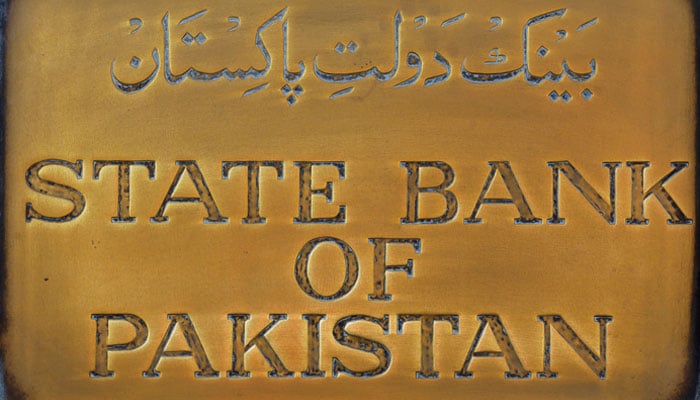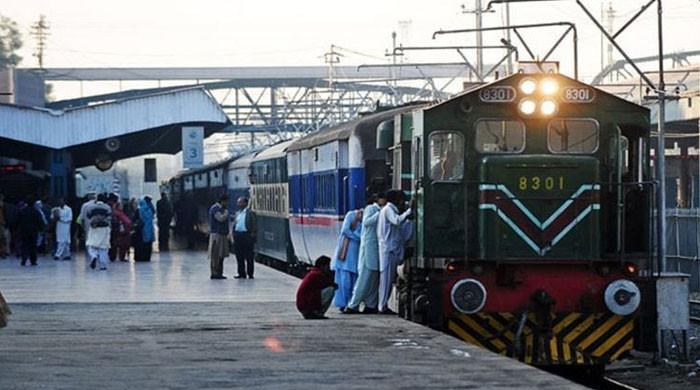SBP monetary policy: Massive hike in interest rates on the cards
The market awaits the outcome of the central bank's May 23 meeting for clues on its policy trajectory
May 21, 2022

- Market awaits outcome of SBP's May 23 meeting for clues on its policy trajectory.
- Topline Securities in its report anticipate SBP to raise policy rate by 100bps.
- SBP raised its policy rate by 250bps, biggest hike in years, to 12.25% in April.
KARACHI: With the central bank gearing up to announce the monetary policy next week, analysts predict the State Bank of Pakistan (SBP) is likely to further tighten its policy settings in order to fight runaway inflation and help the battered rupee, The News reported.
The market awaits the outcome of the central bank's May 23 meeting for clues on its policy trajectory after a deterioration in the outlook for inflation and an increase in risks to external stability, as well as domestic political uncertainty.
It is worth mentioning that the SBP raised its policy rate by 250 basis points (bps) to 12.25% in an emergency meeting, the biggest hike in years, held in April.
An analyst at Topline Securities in a report said: “Given concerns along with rising inflation and weakening currency, we anticipate SBP to raise the policy rate by 100bps."
Read more: When will govt present federal budget 2022-23?
“Since the last Monetary Policy Statement (MPS) in April, secondary market rates including T-Bill/KIBOR rates have gone up by around 200bps due to uncertainty on the removal of subsidies on petrol and diesel and continuation of the International Monetary Fund (IMF) programme.”
Treasury bills cut-off yields, however, declined for the first time after almost a year in the latest auction held on May 19, declining by 5-29bps with three, six and 12 months’ T-Bill yields clocking in at 14.49%, 14.70%, and 14.75% respectively.
Topline Research conducted a poll of leading fund managers to assess their views on the country's economic outlook.
As per the survey results, around 54% of the participants expected an increase of 100bps, 14% of the participants anticipated an increase of 150bps and 11% expected an increase of 200bps or more.
On the other hand, only 13% of participants expect an increase of 50bps while 9% expect no change.
Read more: PM Shehbaz 'requests' business community to present solutions to Pakistan's economic woes
Pakistan is currently facing tough economic times as depleting foreign exchange reserves, rising fiscal deficit amid huge petrol and diesel subsidy and indecisiveness by the new government on key economic measures is exacerbating economic issues.
“It will be key for the government to take the required reform steps including removal of subsidy on petrol/diesel, measures to curb imports and improve tax collection. This will pave the way for the resumption of the IMF programme which currently remains stalled and will result in dollar flows that could ease pressure on the currency and foreign exchange reserves going forward,” the analyst noted.
Inflation is likely to increase further in the coming months. The rupee has lost 9.8% in the last two months, breaching the 200-level against the US dollar on Friday. With import cover of less than two months and delays in the IMF bailout, the rupee has faced significant pressure.
The weakening rupee along with record-high fiscal slippages are likely to increase consumer price index (CPI) inflation to 15-16%, making a strong case for at least 100bps hike in interest rates.
Read more; Govt likely to withdraw subsidies before Monday in line with IMF conditions
“This is in addition to the 525bps increase in policy rate already taken by the SBP since September 2021,” another analyst said.
Data released from the Pakistan Bureau of Statistics (PBS) two weeks ago showed CPI inflation reached a two-year high of 13.37% in April 2022, compared with the same month a year ago, and was 1.6% higher than the previous month. The SBP expects the inflation to average between 9-11% this fiscal year.











